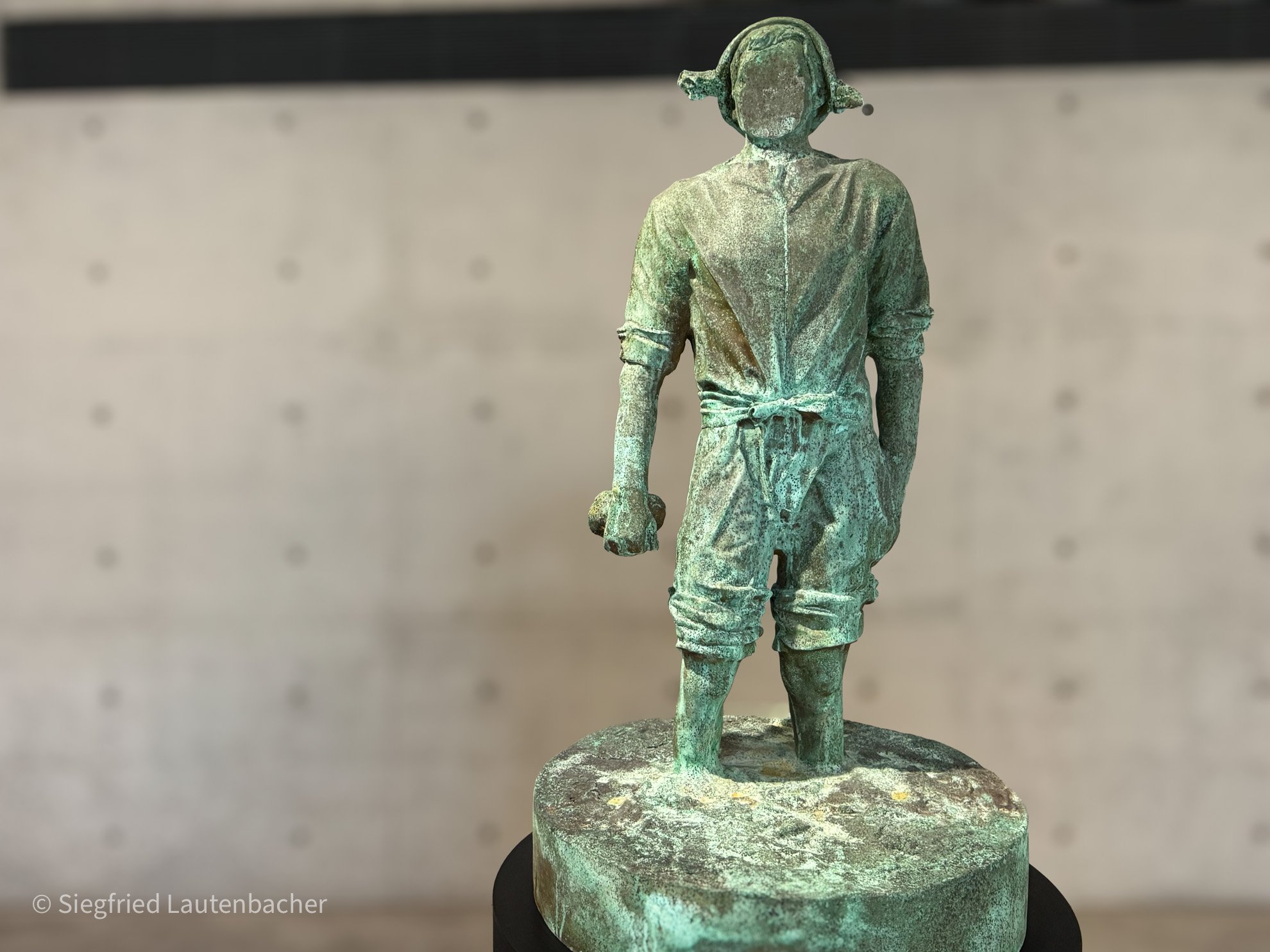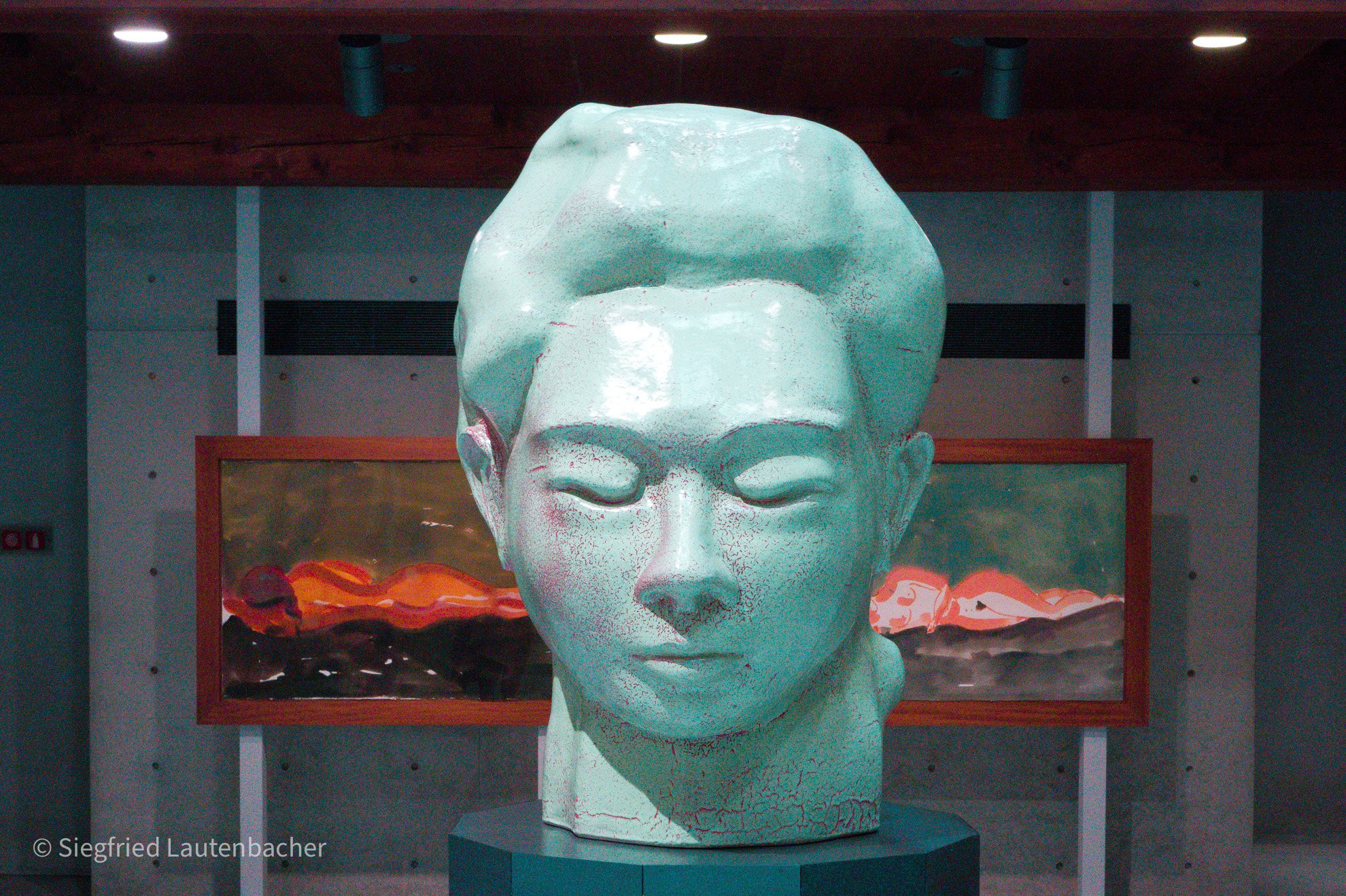The Empty Space of the Face
Notes from the Punta della Dogana
The Accidental Origin of a Metaphor
Sometimes, the most powerful artistic metaphors arise from pure chance. In the early 1980s, while trying to make a small Star Wars figurine stand upright, Thomas Schütte accidentally poured too much wax. The wax flowed down to the figure's calves, literally fixing it to its base. What began as a craftsman's mishap was immediately recognized by the artist as a potent metaphor—and in his very first sketches, he already envisioned monumental projects for public spaces.
Today, four decades later, I find myself standing once again in the first hall of Schütte's retrospective, "Genealogies," at the Punta della Dogana, in front of three of these monumental "Men in Mud." Their bodies seem to want to move with the wind, yet their feet are inescapably trapped in their pedestals. They are anti-monuments of a new kind: not a glorification, but "an ode to failure and perseverance," as the exhibition text puts it.
Mann ohne Gesicht, Thomas Schütte 2018
The Face in the Hand
One figure, in particular, draws my gaze: the much smaller "Man without a Face" from 2018, a bronze figure with a greenish patina standing at the far end of the room. While the three monumental figures dominate the space, this intimate sculpture forms an almost private counterpoint to their anti-heroic monumentality. It is faceless—the countenance is cut off, ground away, erased. But upon closer inspection, a mystery reveals itself: he is carrying something in his right hand. Is it the severed face? A gesture that oscillates between loss and desperate preservation, between destruction and a helpless offering of what is lost.
This sculpture initially triggers a peculiar tranquility in me. No demands, no gazes, no other to confront. But it is a deceptive silence. It is, rather, an emptiness, an absence. The green patina speaks of time passing without an individual consciousness to experience it. It is not the lived time of memory and expectation, but the anonymous time of decay.
The "Il y a" – When Being Becomes a Threat
I notice the connection to a philosopher I have been revisiting more intensely lately. The sculpture reminds me of Emmanuel Levinas and his unsettling concept of the "il y a"—that anonymous, impersonal "there is," which describes a form of anonymous, impersonal being that precedes all individual existence. It is not nothingness, but it is not a specific something either. Imagine the restlessness of a sleepless night, when all objects blur and only a dull, oppressive "being-there" remains—without subject, without object, without meaning. The "il y a" in Levinas is a suffocating horror—the pure "thatness" of being, without any "what" or "how."
Schütte's faceless figure strikes me as an almost perfect embodiment of this philosophical concept. It has the human form, but without what, for Levinas, truly constitutes the human: the face. The face, "visage" in French, is in Levinas's ethics the site of the encounter with the absolute Other, the site of the ethical imperative, "Thou shalt not kill." Schütte's figure shows us a vision of humanity without this ethical dimension—pure existence without the possibility of an encounter.
Being Struck
But what happens to us, the viewers, before this sculpture? For Levinas, the ethical experience is never something we actively bring about, but something that befalls us, that "happens to" us. So it is here: the encounter with the faceless figure is not an aesthetic judgment we make, but an event that strikes us. The sculpture does not seek our admiration—it confronts us with a void we cannot ignore. In this forced attention before the artwork, perhaps the way out of the "il y a" reveals itself: not through active conquest, but through the willingness to be struck by the empty space of the Other.
Thus, precisely through the absence of the face, the bound figure becomes a silent appeal to our ethical responsibility. The empty space of the face becomes a testament to its necessity.
Großer Frauenkopf, Thomas Schütte 2021
First Awakening
At the end of the exhibition stands the "Großer Frauenkopf" (Large Woman's Head) from 2021. The eyes are closed, the face idealized, yet remote. After the long journey through facelessness and captivity, here is a face that is present, but not yet awake.
If the "Man without a Face" embodies the sleepless night of the "il y a," then this bust is perhaps the first, hesitant light of morning. The face is there again, but it is still in a dream, in a sphere that comes before the ethical call, before direct confrontation.
The closed eyes do not refuse the encounter—they are simply not yet ready for it.
The exhibition "Genealogies" runs until the end of November 2025 at the Punta della Dogana, Venice.

